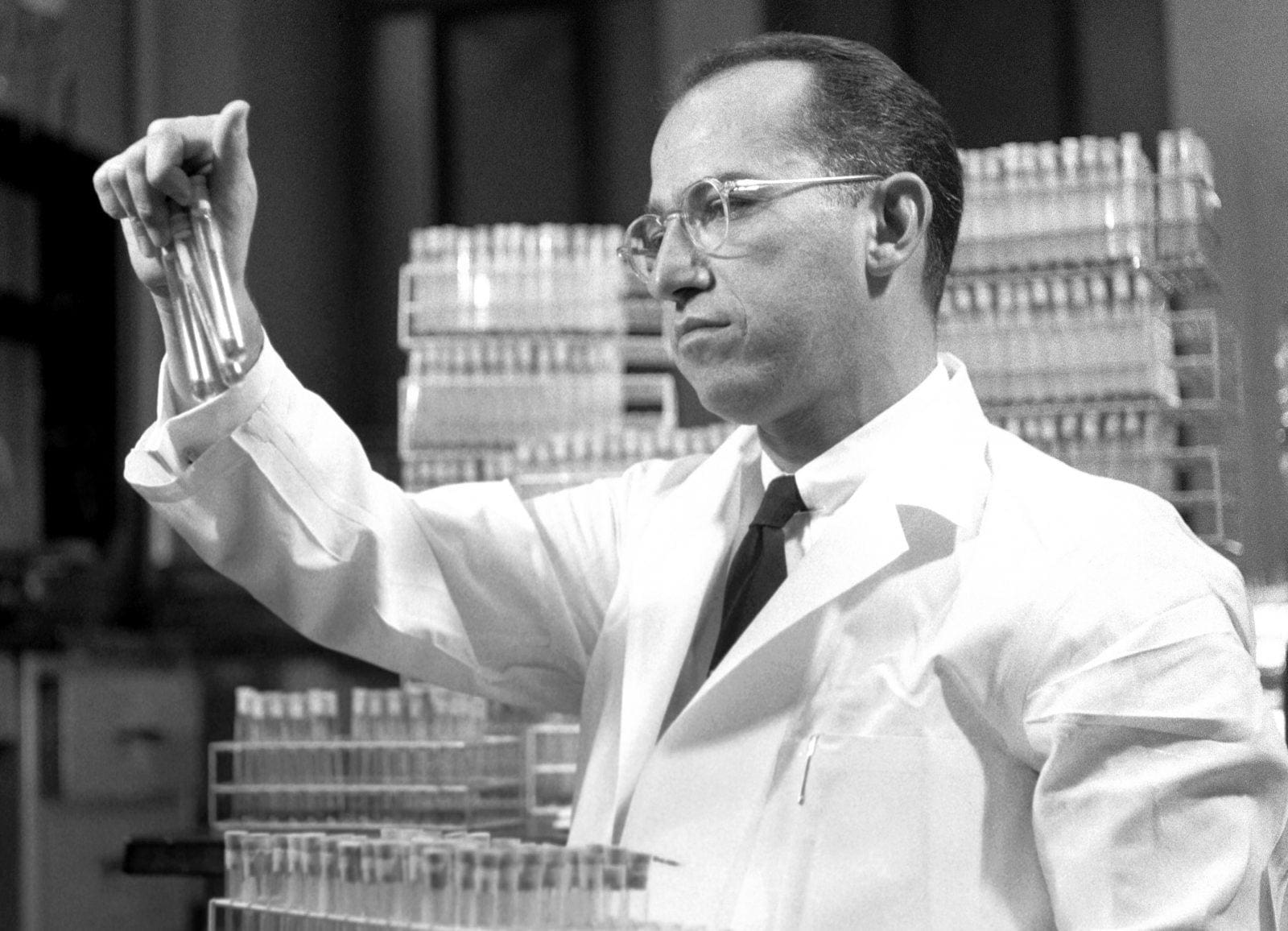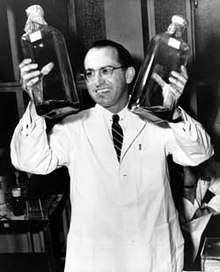Published On:2014/10/29
Posted by alialsayed
Jonas Salk

Jonas Edward Salk (October 28, 1914 – June 23, 1995), He was born in New York City to Jewish parents. While attending New York University School of Medicine, Salk went into medical research instead of becoming a practicing physician.
He was an American medical researcher and virologist. He discovered and developed the first successful inactivated polio vaccine.
In 1942 at the University of Michigan School of Public Health he became part of a group that was working to develop a vaccine against the flu. In 1947 he became head of the Virus Research Lab at the University of Pittsburgh. At Pittsburgh he began research on polio. On April 12, 1955, the vaccine was released for use in the United States. He established the Salk Institute for Biological Studies in 1963. Salk died in 1995.
Early Life
Jonas Salk was born in New York City on October 28, 1914. His parents, Daniel and Dora (née Press) Salk, were Ashkenazi Jewish immigrants who had not received extensive formal education.
He grew up poor, where his father worked in the garment district. Education was very important to his parents, and they encouraged him to apply himself to his studies.
Education
When he was 13, Salk entered Townsend Harris High School, a public school for intellectually gifted students. Named after the founder of City College of New York (CCNY).
In high school "he was known as a perfectionist . . . who read everything he could lay his hands on," according to one of his fellow students. Students had to cram a four-year curriculum into just three years. As a result, most dropped out or flunked out, despite the school's motto "study, study, study." Of the students who graduated, however, most would have the grades to enroll in CCNY, noted for being a highly competitive college.
After graduating from high school, Salk attended the City College of New York, where he earned a bachelor's degree in science. He went on to earn his M.D. from New York University in 1939. Salk interned at Mount Sinai Hospital for two years and then earned a fellowship to University of Michigan, where he studied flu viruses with Dr. Thomas Francis Jr.
 “Hope lies in dreams, in imagination and in the courage of those who dare to make dreams into reality.”
“Hope lies in dreams, in imagination and in the courage of those who dare to make dreams into reality.”Research career
Salk began applying for permanent research positions, but he discovered that many of the jobs he desired were closed to him due to Jewish quotas.
By 1947, Salk decided to find an institution where he could direct his own laboratory. After three institutions turned him down, he received from William McEllroy, the dean of the University of Pittsburgh School of Medicine, an offer which included a promise that he would run his own lab. He accepted, and in the fall of that year, left Michigan and relocated to Pennsylvania. But the promise was not quite what he expected. After Salk arrived at Pittsburgh, "he discovered that he had been relegated to cramped, unequipped quarters in the basement of the old Municipal Hospital," writes Bookchin. As time went on, however, Salk began securing grants from the Mellon family and was able to build a working virology laboratory, where he continued his research on flu vaccines.
In 1956, Wisdom magazine ran a cover story about Salk, summarizing some of the reasoning behind his desire to do research:
There are two types of medical specialists. There are those who fight disease day and night, who assist mankind in times of despair and agony and who preside over the awesome events of life and death. Others work in the quiet detachment of the laboratory; their names are often unknown to the general public, but their research may have momentous consequences.
Polio Vaccine
In 1947, Salk took a position at University of Pittsburgh, where he began conducting research on polio, also known as infantile paralysis. By 1951, Salk had determined that there were three distinct types of polio viruses and was able to develop a "killed virus" vaccine for the disease. The vaccine used polio viruses that had been grown in a laboratory and then destroyed.

Nothing happens quite by chance. It's a question of accretion of information and experience.

In its first few years, the vaccine had a remarkable impact on the number of new cases of polio reported. There were more than 57,000 cases in the United States in 1952, according to the College of Physicians of Philadelphia. A decade later, that number fell to less than a thousand. The Salk vaccine was replaced with a live virus vaccine developed by Albert Sabin around this time because it was less expensive and easier to use.








